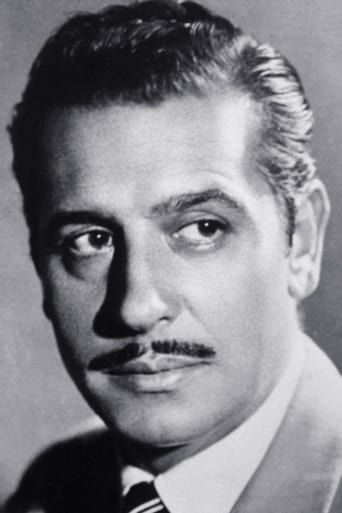Linbeymusol
Wonderful character development!
Claysaba
Excellent, Without a doubt!!
Afouotos
Although it has its amusing moments, in eneral the plot does not convince.
Geraldine
The story, direction, characters, and writing/dialogue is akin to taking a tranquilizer shot to the neck, but everything else was so well done.
jadavix
"No One Heard the Scream" has many of the tropes of a mystery, or even giallo, film. However it largely eschews these genres for most of the run-time, creating less a genre film than a twisted drama about two people pushed to the edge of experience.The protagonist is an expensive mistress for rich men who witnesses her neighbour disposing of his wife's body. The neighbour takes her hostage and the duo go on a trip to the ocean to dump the body in the sea. Along the way, the movie loses its original thriller-aspect and becomes a drama about two people in a strange situation. The actress, particularly, is a problem, so cold and inert. When the movie makes its predictable, if belated, detour into homoeroticism with the introduction of an unnecessary nephew of hers, it's almost a relief to see something on screen other than hardened, impassive faces.There is a romance that feels unlikely and forced, and you are forced to make the conclusion that the openly gay Eloy de la Iglesia just wasn't comfortable shooting romance, love or eroticism between men and women. Perhaps this extended to his casting of the female lead. She looks like someone who was probably a knockout about five years ago. Would men who can afford to keep an expensive mistress use someone her age?Then there is a conclusion, which is also a little hard to swallow, and smacks of the tawdry plot developments we got from the giallo genre. It seems like the movie is doubling back on itself, forgetting the progress it made as an interesting drama, and saying "See! This was a thriller, after all!"I don't know if de la Iglesia ever really made genre pictures; even "The Cannibal Man", notorious Video Nasty though it may be, was perhaps equal parts drama. It also featured an unnecessary young male character as a source of homoeroticism.Perhaps de la Iglesia, who was a superb filmmaker, needed to be encouraged to make dramas and leave behind genre tropes. For the rest of his career, that's what he seemed to do, thankfully.
morrison-dylan-fan
Despite having read a lot of praise for the title over the years,I've found myself constantly having to push Eloy de la Iglesia'a The Cannibal Man to the back of my 'must buy' list.With a poll coming up soon on IMDb's Classic Film board for the best titles of 1973,I was delighted to discover,that I had unknowingly recently picked up a 1973 film directed by Iglesia,which led to me excitingly getting ready to hear the scream become unleashed.The plot:With there only being a few days to go before she is to take her monthly plane trip to London,so as to spend a weekend with her 'sugar daddy',Elisa finds herself suddenly not wanting to make the 'traditional' trip to London,which leads to Elisa phoning up her piece of 'sugar' and telling him that its all over.Being keen to get away from any familiar faces,Elisa decides to leave her holiday villa behind,and to instead move into a low-rent flat,whose tower block only contains a janitor and a loving husband and wife called Miguel and Nuria.After having exchanged pleasantries with Miguel and Nuria,Elisa lays down in bed,and gets set for a quiet weekend.Beginning to fall asleep,Elisa suddenly hears a strange noise which sounds like an object being dragged across the floor just outside her door.Opening the door,Elisa is met with the rather surprising sight of Miguel dropping a dead body down the tower block's lift shaft.Rushing back to her flat and slamming the door shut,Elisa is given the good news by Miguel,that due to it being the weekend,that they are the only 2 residence in the building.Telling him to go away,Miguel decides to reveal to Elisa that he has a gun,and that he will use it unless she lets him in.Carefully opening the door,Elisa is confronted by Miguel holding the gun and telling her to calm down. Realizing that he has all the power in his hand,Miguel tells Elisa that she will be safe,as long as Elisa becomes an accomplice and helps him to properly remove the body.Realizing that she has nowhere else to go,Elisa agrees to Miguel's blood-soaked hands liaison.View on the film:Smartly using the near empty block of flats as a method to physically display the closed off, isolated relationship that Elisa and Miguel place themselves in,the screenplay by co-writer/ (along with Antonio Fos and Gabriel Moreno Burgos)director Eloy de La Iglesia keeps the number of supporting character's to a bare minimum so that the tense relationship between Elisa and Miguel becomes tightly coiled,as Elisa finds herself increasingly becoming an accomplice to the body removal,whilst Miguel finds Elisa's determination to keep her head up high in front of him,to be something that oddly begins to charm Miguel.Giving the title a Giallo-slated shot of Film Noir,the writer's precisely inject supporting characters at crossing points in Elisa and Miguel's relationship,where the murky shadows of their morals get a firmer grip every time one of them leaves the opportunity to separate from the ruthless plans of the other.Making the misconceptions of Elisa's and Miguel's personalities a central themes,the writers deliver a delicately handled,breath taking ending which gradually wraps its venom around Elisa and Miguel,and also cleverly changers the viewer's perceptions on Elisa and Miguel's motives.Teaming up after both of them had worked with La Iglesia on separate occasions,Carmen Sevilla and Vicente Parra each give excellent performances,with Parra showing Miguel's devilishly charming smile to be a cover for his harsh,decisive personality,as Parra shows how far Miguel is willing to go in order to get rid of the body.Joining Parra,the very pretty Carmen Sevilla gives a stunning performance as Elisa,thanks to Sevilla keeping Elisa away from being a two dimensional goody by revealing Elisa to be a Femme Fatale who has a lust for money,whilst also showing,that despite being sickened by his actions,Elisa finds something thrilling in Miguel's body burying games.Made at a time when homosexuality was illegal in Spain,director Eloy de La Iglesia bravely gives the movie strong homo-erotic undertones,by having the camera speed by during Elisa's display of flesh,whilst allowing the camera to stay noticeably paused for moments when the male character's show their skin.Closely working with cinematography Francisco Fraile,auteur La Iglesia reveals a tremendously stylised eye,as La Iglesia and Fraile use jagged,complex tracking shots to show the tightening of Elisa and Miguel's relationship,as La Iglesia superbly uses short,sharp 'dry' shots to guarantee that this scream will be heard.
lazarillo
This is another film by interesting Spanish director Eloy Inglesias. It might be the least interesting of the four films of his I've seen, but it has the same themes that seem to run through all his work--apartment living, voyeurism, domestic murder, and repressed homosexuality. It also features two of his regular actors Vincent Parra ("Cannibal Man) and Carmen Sevilla ("The Glass Ceiling"). Sevilla plays a high-priced call girl who herself is keeping a younger male lover. She comes out the door of her luxury high-rise apartment one day and witnesses her neighbor (Parra) dropping a body,apparently his wife, down the elevator shaft. This may seem like another knock-off of Hitchcock's "Rear Window" (which Inglesias had already "knocked off" in his film "The Glass Ceiling"). But it goes in a different direction when the man kidnaps her at gunpoint and forces her to help him get rid of the body. A strange relationship develops between them.This movie is pretty illogical as Sevilla's character passes up several opportunities to turn her neighbor in, even before she develops a Stockholm-syndrome-type relationship with him. There's a twist at the end which is pretty ridiculous, but certainly unexpected. It's really this absurdity though that marks this as a kind of Spanish giallo (an "amarillo"?) since it lacks the over-top delerium of most Italian-Spanish gialli, and is a little more of a subdued character study. If it were more logical, it would be much more in the realm of Hitchcock or Claude Chabrol than in the realm of the gialli.Inglesias also dials back the homoeroticism a little here. Unlike in "Cannibal Man" there is no intimation that his male characters are closeted homosexuals. Sevilla in some ways may perhaps be a kind of female stand-in for the gay director, and he certainly fetishes the two male actors, who frequently appear shirtless while the beautiful Sevilla (to the disappointment of heterosexual males everywhere) does not. This is probably the weakest of Inglesias' films that I've seen, but it's certainly not bad.
capkronos
For starters, I have to say that the current 4.3 rating on IMDb is an absolute joke. This is a very good, drama/thriller with interesting characterizations, strong performances, suspense, good plot twists and a few well-time shocks. Middle-aged, still very attractive Elisa (Carmen Sevilla) has gotten by in life on her looks. We first meet her as she's bidding farewell with her wealthy older lover Óscar (Antonio Casas), who from all indications has been supporting her financially (apartment, car, money, plane tickets) in exchange for one weekend a month of her time. Elisa's growing tired of it, though, and decides to skip her flight to London so she can call off the arrangement. That night, her relief at being free and able to possibly start anew turns to horror as she exits her apartment and finds her next-door neighbor Miguel (Vicente Parra) dropping the freshly-killed body of his wife Nuria (María Asquerino) down an elevator shaft. Elisa runs back into her apartment and locks the door, but Miguel manages to get in through the window, brandishing a gun. Instead of killing her, Miguel decides to flip things around and turn her into an accomplice; making her accompany him across town so they can properly dispose of the corpse. As the two head toward their destination (a secluded beach house) there are a lot of suspenseful close calls with the police as well as a strange bond that starts growing between the two. After awhile, Elisa seem all too willing to cooperate with her abductor. After they sink the corpse in a lake, she even decides to carry on the relationship with Miguel when they return home to their respective apartments.Director Eloy de la Iglesia is best known here in America for his 1972 shocker CANNIBAL MAN; which was good enough to encourage me to seek out more of his work. This is the first one I've been able to locate (his films are very hard to find here) and thankfully it's every bit as good as I was hoping it would be. Despite being listed as strictly horror on IMDb, this really defies genre and mixes drama, black comedy, suspense, road movie, character study, psychological thriller and horror, with a few jolts and bloody scenes. In that regard it reminded me a bit of Claude Chabrol's LE BOUCHER; which is horror not in the traditional sense of jump scares, supernatural beings, gore, etc., but one more grounded in the everyday; in reality. It's the lows "normal" people can hit to fulfill themselves and find a sense of belonging in this world.There are some very Hitchcockian scenes here, such as when Elisa and Miguel end up having to transport people injured in a car accident to a hospital and police ask him to put a suitcase in the trunk... where the body of his wife already is. However, the attention paid to the lead characters and how they were fleshed out is what made the movie stand out to me. We learn a bit more about each person as the film progresses and what makes both tick and what makes them eventually click with one another. Miguel is a man whose dreams of becoming a successful writer never came to fruition and who settled for marriage to a wealthy woman he didn't love instead. Elisa, though supported by a man (or possible several men), in turn has her own younger lover (Tony Isbert), who SHE supports. She seems to thrive on feeling needed, by someone, anyone, for any reason. At one point she even manages to turn the tables on her abductor and can easily kill him, but decides not to. Events like these may come off as silly in some hands, but they are completely plausible here because of strong dialogue, character detail and the performances. There's also a big twist at the end that I didn't see coming and an ending that is unexpected, ironic and tragic. If you can find a copy of this anywhere, I highly recommend watching this. And if you need help finding a copy with English subtitles, feel free to PM me and I can point you in the right direction.





